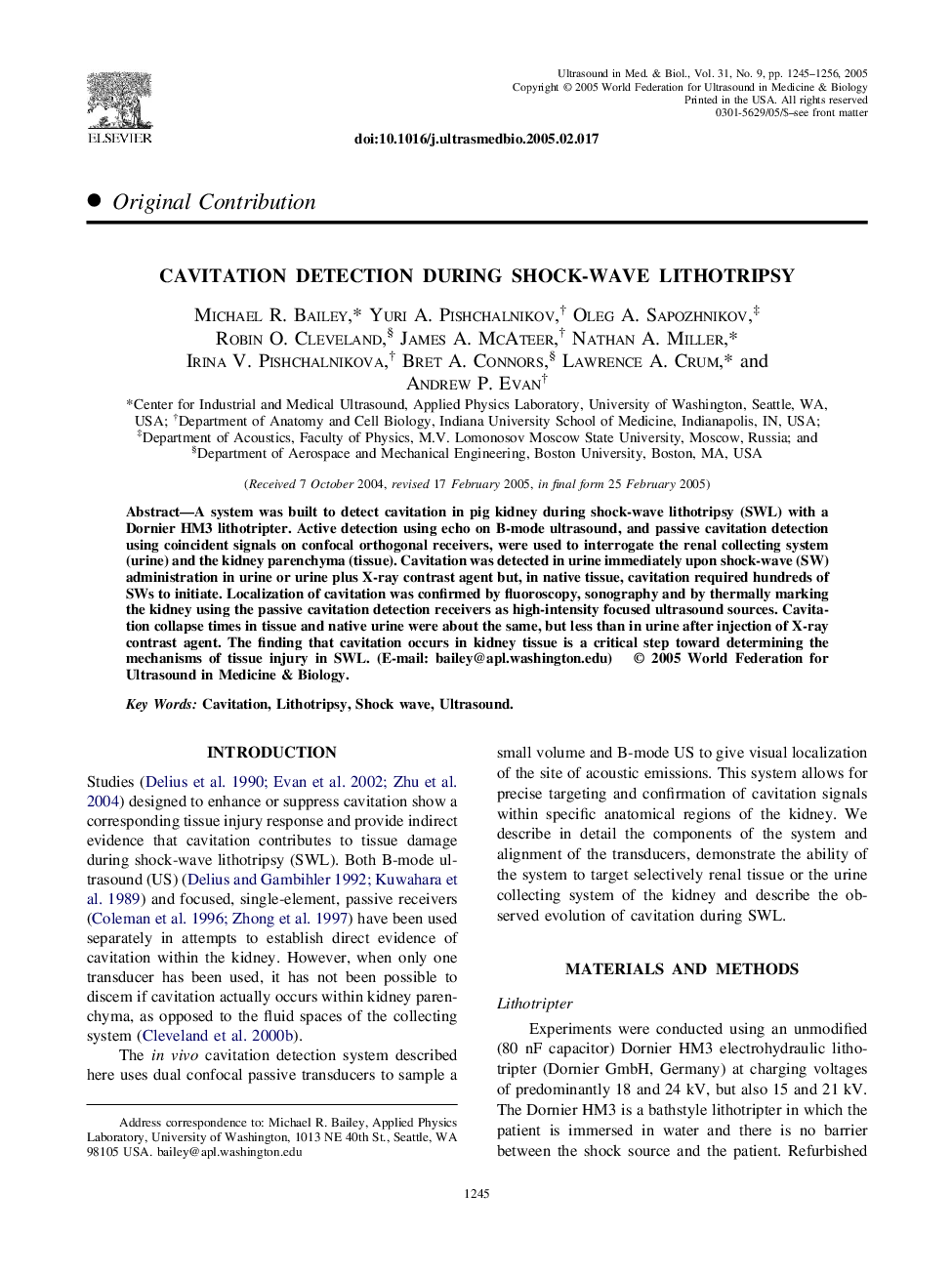| Article ID | Journal | Published Year | Pages | File Type |
|---|---|---|---|---|
| 10692694 | Ultrasound in Medicine & Biology | 2005 | 12 Pages |
Abstract
A system was built to detect cavitation in pig kidney during shock-wave lithotripsy (SWL) with a Dornier HM3 lithotripter. Active detection using echo on B-mode ultrasound, and passive cavitation detection using coincident signals on confocal orthogonal receivers, were used to interrogate the renal collecting system (urine) and the kidney parenchyma (tissue). Cavitation was detected in urine immediately upon shock-wave (SW) administration in urine or urine plus X-ray contrast agent but, in native tissue, cavitation required hundreds of SWs to initiate. Localization of cavitation was confirmed by fluoroscopy, sonography and by thermally marking the kidney using the passive cavitation detection receivers as high-intensity focused ultrasound sources. Cavitation collapse times in tissue and native urine were about the same, but less than in urine after injection of X-ray contrast agent. The finding that cavitation occurs in kidney tissue is a critical step toward determining the mechanisms of tissue injury in SWL. (E-mail: bailey@apl.washington.edu)
Related Topics
Physical Sciences and Engineering
Physics and Astronomy
Acoustics and Ultrasonics
Authors
Michael R. Bailey, Yuri A. Pishchalnikov, Oleg A. Sapozhnikov, Robin O. Cleveland, James A. McAteer, Nathan A. Miller, Irina V. Pishchalnikova, Bret A. Connors, Lawrence A. Crum, Andrew P. Evan,
